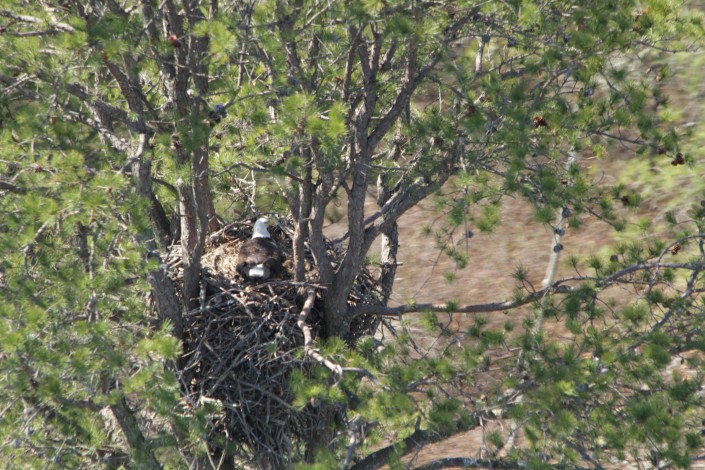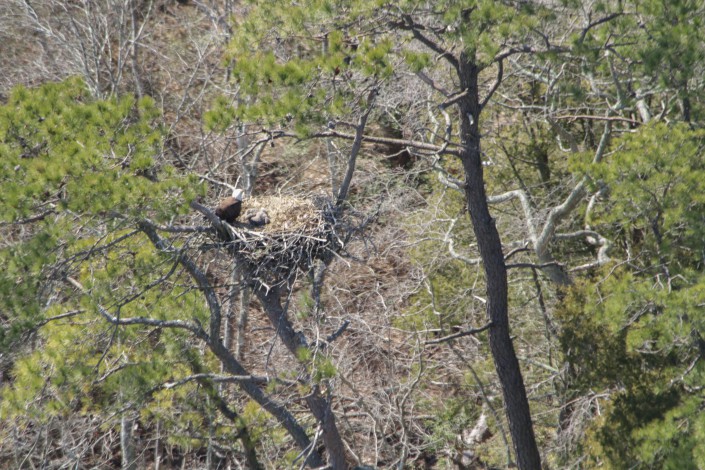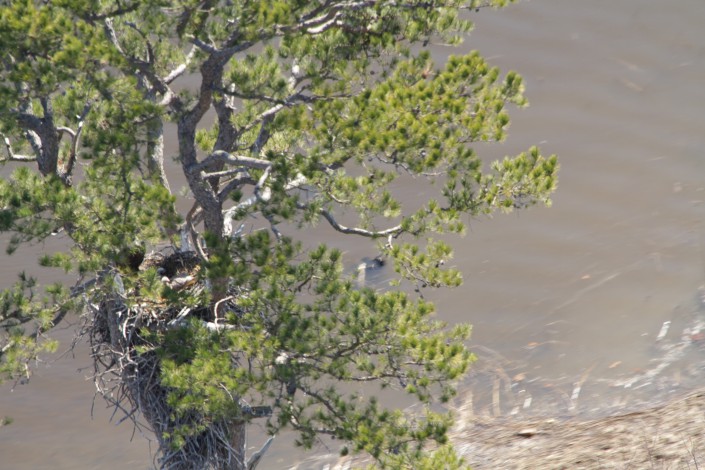Photos from the Field: Bald Eagle Aerial Survey
Never Say “No” When You’re Asked to Participate in an Aerial Survey
By: Ben Wurst, Habitat Program Manager
I always feel lucky when my feet leave the ground, by ladder and especially by helicopter. Last week, I joined Kathy Clark, Supervisory Zoologist with the NJ Division of Fish and Wildlife’s Endangered and Nongame Species Program to conduct a short aerial survey of several bald eagle nests over southern New Jersey. The day started by driving to Coyle Field, which is managed by the NJ Forest Fire Service.
I met with pilot John Whimberg and we flew south to Woodbine to pick up Kathy. From there we proceeded south towards the Delaware Bay. We were searching for existing nests to determine if they are active or not and if they had young. Most of these nests were not accessible to the Bald Eagle Project volunteers who watch nests during the nesting season. Here is a summary of what we found:
- 13 nests checked (searched for an additional 3 nests around Heislerville).
- We documented 3 chicks in 1 nest, and 2 chicks in 3 nests. (chick ages in the 3 to 4 week range).
- Six nests had adults sitting close (on eggs or possibly hatchlings).
- Three nests already failed.
Kathy believes that the failure rate may be a bit higher this year because of the extreme cold weather we had in February, which is when most birds are incubating or have hatchlings. Overall the eagle population has done quite well in recent years, so if there is any reduction in productivity it should not affect the long term trend in the growth of their population.
One of the most amazing things that anyone flying above the ground in New Jersey can see is how much forested land we still have. Many bald eagles nest very close to people and near water. Preserving this habitat is essential to the long term sustainability of the bald eagle population in New Jersey.
We are lucky to have in-kind support from the NJ Forest Fire Service who donated their time and equipment for us to complete this important survey. We thank them for their support of the Bald Eagle Project!


